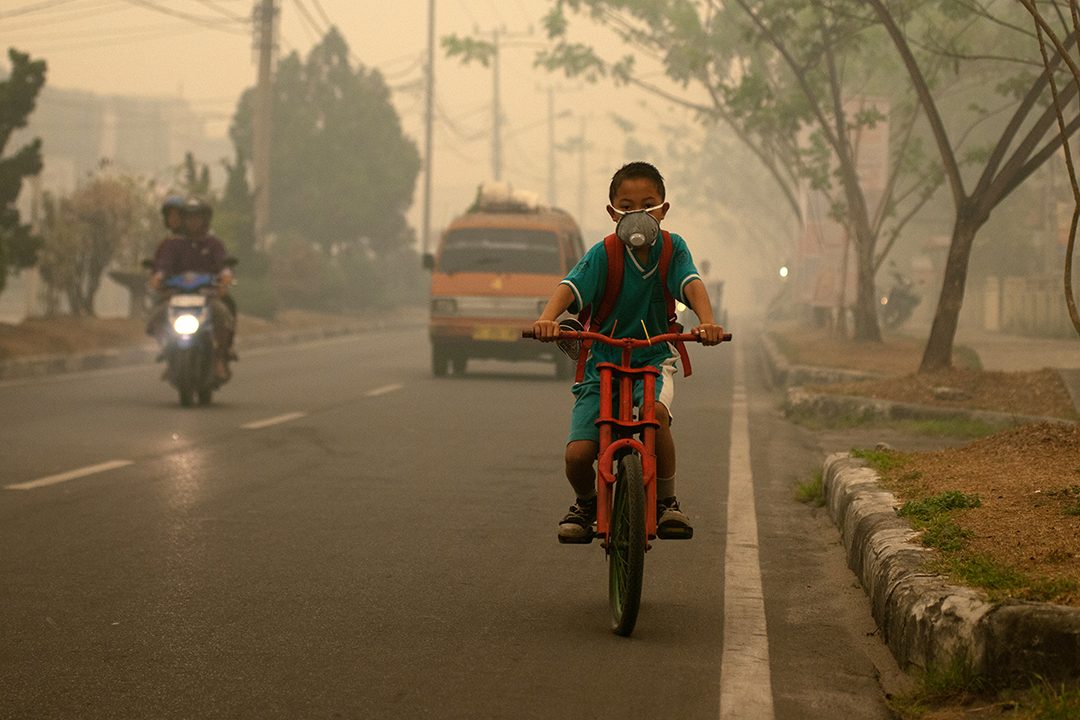July 2019: The UN Environment Programme’s (UNEP) Sixth Global Environment Outlook (GEO-6) for Industry in Asia-Pacific finds that the region’s industrial development places sustainable development at risk. The report provides an overview for policymakers of emerging environmental impacts resulting from the region’s industrialization.
UNEP’s Asia-Pacific regional assessment for GEO-6, released in 2016, identified the region’s rapid industrialization and urbanization as a key driver of environmental change. In response to this finding, UNEP produced a brief e-report to more closely examine the impact of industrial development on the environment. The report titled, ‘GEO-6 For Industry in Asia-Pacific,’ states that industrial development in the region has led to greater prosperity, sustained population growth and increased urbanization but has also resulted in environmental challenges, in part as a result of unsustainable consumption and production patterns. The report aims to provide policymakers with information on these challenges while there is still time to prevent or avoid them; as a result, the report places more emphasis on emerging issues than a typical GEO report.
The report identifies industrial pollution as a driver of biodiversity loss and climate change. It cautions that, without transformational changes in industrial production systems and consumption patterns, the “basic functioning of vulnerable ecosystems will continue to break down,” and calls for industry and policymakers to work together to transition to a “more desirable scenario.” The report recommends reducing greenhouse gas (GHG) emissions through increasing industrial energy efficiency, arguing that energy efficiency is a “low-hanging fruit for industry, with quick pay-back returns.” The report cites a study from India that found the country’s industrial sector has the potential to save 40.2 million tonnes of oil equivalent by 2031 by increasing its energy efficiency.
Without transformational changes in industrial production and consumption, the basic functioning of vulnerable ecosystems will continue to break down.
The report finds air pollution has “re-emerged as a serious threat” to the region’s health and well-being. Only 8% of people in the region breathe air that meets the standards for small particulate matter (PM2.5) set by the World Health Organization (WHO). To tackle air pollution in the region, the report suggests that policymakers target multiple pollutants and multiple sources. The report argues that comprehensive pollution control strategies will be required to target air pollution associated with power plants and heavy industry as well as to address open burning of waste and more effective manure management in the livestock sector. Open burning of waste primarily results from inadequate waste collection, treatment and disposal; consequently, expanding service provision of waste collection and increasing recycling and disposal capacities can help to minimize open burning of waste and its negative impact on air pollution.
On water scarcity and water quality, the report finds that the region is facing severe threats to both water quality and water quantity. The report highlights a number of challenges related to groundwater depletion, industrial contamination of surface and groundwater, nutrient pollution from intensive agriculture and aquaculture, low concentration contaminants from wastewater treatment facilities, and fracking. The report argues that policymakers need to address the environmental pollutants and health impacts from the region’s industrial scale agriculture and aquaculture.
The report also highlights the significant challenges posed by emerging pollutants, such as electronic waste (e-waste), microplastics and nanomaterials, and pharmaceuticals, personal care products and antibiotics. On e-waste, for example, the report observes that the increasing amount of batteries and solar panels being used are becoming increasingly difficult to recycle, and cautions that this issue will require attention by policymakers. The report states that antibiotics and personal care products are being detected in low concentrations in drinking water and aquatic environments, posing adverse impacts on both human health and biota.
The report highlights a number of additional environmental challenges in the region, including the use of clustered regularly interspaced short palindromic repeats (CRISPR) to manipulate DNA. The report cautions that CRISPR has the potential for both great benefit and harm, and can contribute to the release of genetically enhanced food and animal products. The report concludes that the environmental and social impacts of these enhanced species is a potential “sleeping” issue in the Asia-Pacific region. [Publication: GEO-6: For Industry in Asia-Pacific] [UNEP Publication Webpage] [SDG Knowledge Hub Story on GEO-6 Launch]
